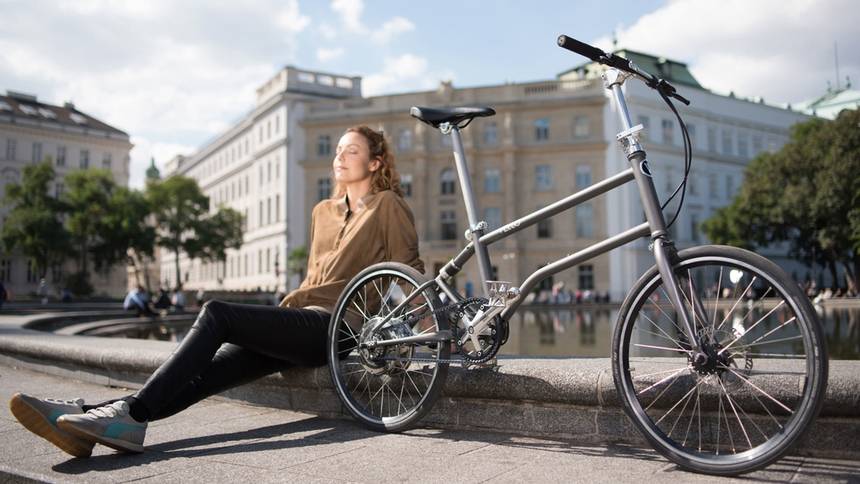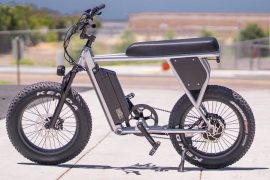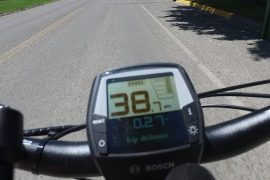A simple answer to this question is most electric bikes do not charge while pedalling, however, there are a few electric bikes in the market that do have the regenerative capabilities. Bike manufacturer that offers regenerative equipped e-bikes will on average charge your battery less then 10%, and if you are careful and break lightly when coming up to stoplights and going down hills, you may be able to get a regenerative charge as high as 20% but most likely lower.
Most people have this paradigm about the e-bikes, that an e-bike can charge itself when pedalling. Although this is true in some cases by regenerative electric bikes that are sold today, because of the low 10% return on input, a person would need to pedal 10 miles to give them a 1-mile charge. Hence, it is more sustainable to use a charger & plug it in any electric socket. Most e-bike batteries take around 4 hours to charge and cost approximately 20 cents with a range of from 30 to 50 miles if you put that into perspective with a regenerative electric bike you would have to pedal for 100 miles to get 10 miles back.
Now you must be wondering, What is that Regenerative battery capabilities/ Regenerative Braking?
This is just basic physics, you might have studied this in your school textbooks of Physics, Regenerative braking is when an electric bike uses its braking system and motor to recapture some of the bikes kinetic energy and convert it into electricity, and this energy is used to charge the e-bike’s battery. With a typical braking system, the brakes are applied, and this will create friction, this friction will then slow or stop your bike. The surface of the road and the surface of the slowing wheel also produces friction.
This friction generates kinetic energy, and this energy is dissipated into the air. In short, this heat energy is wasted. Regenerative power captures some of this energy but is not very efficient. A regenerative electric bike uses the motor to slow the bike down.
When you push the brakes in these bikes, the controller puts the bikes electric motor into reverse mode, causing the motor to run backwards and slow the bike down. When the motor is running backwards, this turns the motor into an electrical generator and produces electricity that can be fed back to the battery. The controller will decide when the motor should be reversed, and send back electrical energy to charge the battery.
In a regenerative braking system, the idea is to get the motor to run backwards and to use the momentum of the mechanical energy to puts the motor into reverse.
Momentum is the property that keeps the electric bike moving forward once it has been brought up to the desired speed. When the motor is reversed, the electricity generated by the motor is then fed back into the battery, where it can be used to accelerate and move the bike forward after the bike has stopped.

You will use more caloric energy than the electrical energy produced.
Theoretically, you can fully replenish a battery by pedalling & keeping the brakes on lightly, but in reality, it isn’t efficient. If you want to completely charge your battery, you will have to pedal for an entire day, a human pedalling for several hours with the added resistance of the brakes will burn up many calories and have to consume a lot of food to charge the battery. What you are doing is converting leg energy ( mechanical energy) into chemical energy that is then stored in the battery. If you remember from science class that calories are a form of energy. The calories used will provide much less electrical power than the energy required to produce it, this makes regenerating a battery not very efficient.
Is Regenerative Braking on the E-Bike effective?
The effectiveness of a regenerative electric bike can vary significantly based on many factors like driving conditions, terrain and the size of the rider. Driving conditions can make a big difference in the effectiveness of regenerative brakes.
If you ride in stop and go traffic and repeatedly brake, you will capture much more energy than you would if you rode on a long flat stretch without stopping or using the brakes.
If you do a lot of uphill riding, you will not use the brakes very often and have less opportunity to generate electricity.
Motor torque variations cause another issue for regenerative braking. Drivers tend to vary the amount of braking. For example, a driver might increase their pressure on the brake as they slow down. This variation in torque causes inefficiencies since the regenerative braking must take into account the variations in torque as it calculates the amount of energy to recoup.
Pros of Regenerative braking system
Brakes last longer on an Electric regenerative bike. Another advantage of regenerative brakes is not only are you by using the motor to slow your bike and producing electricity you are using the brakes pads much less and thereby your breaks will last much longer. Compared to regular breaks.
Cons of a Regenerative braking system
One problem with regenerative braking systems is they are not the best for two-wheel-drive braking systems. A negative torque is applied to the drive wheel when the regenerative braking system is used. This negative torque is applied to only one wheel, and no brake is applied to the other wheel, and it can spin freely.
You will get uneven tire and brake wear because of negative torque distribution. This could cause skidding when braking. This is why most e-bikes with regenerative systems have a rear hub motor as opposed to front hub motors that could be much more dangerous.
The motors torque variations cause other issues for regenerative braking systems. Drivers often vary the amount of braking they do in different driving conditions. A driver might increase their pressure on the brake as they slow down.
A regenerative braking system must take into account the changes in torque to calculates the amount of energy to recoup. These variations in torque cause further inefficiencies in regenerative braking systems.
So, here we are with the principal question again Do electric bikes charge when pedalling?
Theoretically, it is possible, but currently, the technology present in the market isn’t developed to execute this process in a sustainable & 100% effective way. As using a charger and plugging into an AC outlet, it will cost less than ten cents to charge an e-bike battery fully. Whereas to pedal all day to charge a battery you will burn thousands of calories and that caloric energy will have to be replaced with food and that food you will need to consume will cost much more than 20 cents. But who knows, what future may bring. So, we can hope for the best & till then use the E-bikes as they are because according to what’s in the market, E-bikes are far better.
You can check best electric bikes under £1000. So that you do not miss any of the features and can decide the best option for yourself.



